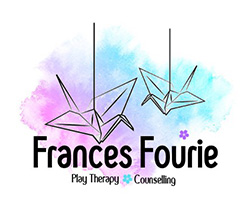You might be wondering why slime, that gooey, colourful substance your child can’t seem to get enough of, is finding its way into play therapy sessions. As a parent, it’s natural to have reservations about this trend, especially considering the potential mess it can create. As a parent myself, I know all too well the potential messiness and the havoc slime can wreak on carpets and clothes. However, I have come to embrace it, and even love it, as slime possesses unique therapeutic properties that make it an invaluable tool in play therapy.
Creating Comfort and Engagement in Therapy
Therapy can be daunting for children. The idea of sitting down and talking about their feelings might be overwhelming. Slime changes that. Making slime becomes a fun, engaging activity that immediately puts children at ease. It’s an icebreaker that helps them feel comfortable, allowing therapy to flow more smoothly.
Enhancing Mindfulness and Sensory Experience
Slime isn’t just goo; it’s a mindfulness activity. By focusing on the texture, temperature, and smell of slime, children engage mindfully in the activity. This sensory experience helps them connect with the present moment, promoting relaxation and emotional awareness.
Stress Relief and Relaxation
The very act of making slime involves kneading, squeezing, and manipulating it. These actions serve as natural stress relievers, helping your child release tension and manage frustration. Think of it as a therapeutic fidget tool that’s not only fun but incredibly effective.
Developing Executive Functioning Skills
Making slime isn’t just a random activity. It involves planning, following instructions, problem-solving, and evaluating outcomes – all critical executive functioning skills. As children navigate the complexities of slime-making, they learn to follow directions and practice impulse control. Adding colours and glitter? That’s where the real challenge lies – too much, and the slime doesn’t form, teaching your child about balance and control.
Building Self-Regulation Skills
Slime making can be exciting, but it also requires patience. Children learn to manage their arousal levels, frustration, and disappointment when the slime doesn’t turn out as expected. These self-regulation skills are vital for emotional well-being and resilience.
Making Therapy Enjoyable
Lastly, and most importantly, slime makes therapy fun! Therapy sessions shouldn’t feel like a chore; they should be enjoyable and engaging. When children have fun, they are more likely to participate fully, leading to more effective therapeutic outcomes.
Conclusion
So, as a parent, if you find yourself questioning the colourful addition of slime to your child’s therapy, try to remember its healing power. Through engagement, mindfulness, skill development, and sheer enjoyment, slime becomes a catalyst for growth and healing. Embrace the mess, because within it lies a world of therapeutic potential, helping your child navigate their emotions and experiences with resilience and creativity.

